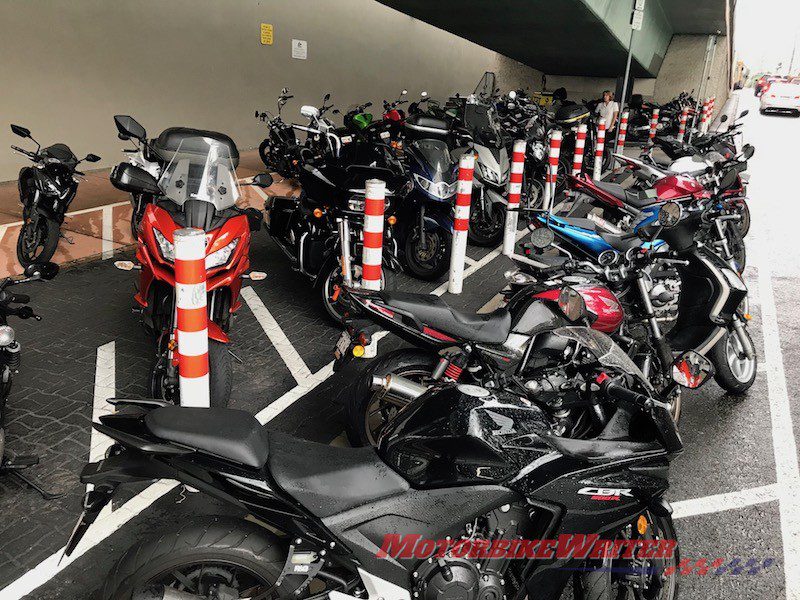Rural Victorian riders who would like park-and-ride stations to commute to work by train or bus have been urged to take part in a phone survey.
Transport Victoria new product development manager Adrian Webb says the survey will help them plan suitable infrastructure.
“There’s no point building infrastructure unless we have a really clear idea about who is most likely to use it and what messages will resonate with them (and actually get them to change their behaviour),” he says.
The survey hopes to find how many rural motorcycle and scooter commuters would prefer to use park-and-ride facilities on the urban outskirts rather than riding the whole way into the city.
“Without the infrastructure available at stations the survey won’t have benefits in terms of quantitative data, but we usually find a few key insights from this kind of research that informs investment.
“With so many stations being built or rebuilt at the moment, there is a real opportunity to process this issue – provided we can prove that good facilities will actually change behaviour significantly and that we are confident that we have good key messages that will really resonate with a specific section of the community.”
Adrian says he believes young urbanites are most likely to use park-and-ride rail or bus services.
“The most promising group might be young people on the urban fringe, who have a level of mortgage stress, who aren’t confident riders, but who see a motorbike for local trips (e.g. to the station) as being a cost-effective and convenient alternative to the car,” he says.
“I’m less confident we can change the behaviour of people who presently ride all the way into the city, but that’s something really important to find out.”
Support for survey
The Victorian Independent Riders’ Group has recommended riders take part in the survey.
Spokesman Damien Codognotto says Victorian train and bus stations need to improve their park-and-ride facilities for riders with lockers, lighting, security cameras and safe parking areas such as these bicycle cages.

“These pushbike cages are all over the place. The one at Surrey Hills is hardly used, particularly in winter,” Damien says.
“They must cost a lot of tax dollars.
“Motorcycle riders’ lockers could be inside the bicycle cages but motorcycles parked outside, nearby. These cages would require little modification and promotion and they could be shared. Win, win.”
He says that as the population doubles over the next 30 years, regional cities will see much more inter-city commuting for work and activities such as sporting events, shows and shopping.
“Rail must become more reliable and motorcycles and scooters must be catered for,” he says.
“We want secure parking with lighting and cameras at public transport stations. We want lockers. Transport Victoria are concerned that lockers pose a security risk. That argument is not credible.
“Lockers big enough for helmets and jackets etc. could be placed in the bicycle cages. They could be made cheaply out of strong wire mesh so you could see what was in them at a glance.
“Carrying a heavy jacket and helmet, gloves and change of clothes on a crowded bus or train is a pain. It would be easier, particularly in winter to ride to work or a show or the footy and, if necessary, change at your destination.”
“If Transport Victoria wants motorcycle and scooter riders to use public transport from Melbourne and Geelong’s outer suburbs and between regional cities in coming decades, they have to make it easy and economical for riders to use public transport.”
Riders needed for survey
Transport Victoria would like to hear from people who have ridden a motorcycle or scooter to a station (Metro or V/Line) in the last two months.
The telephone interview will take about 20 minutes.
If you would like to take part, click here to email Adrian.
Include your name, phone number, year of birth, which station you rode to and the approximate number of times you have ridden to a station since the start of 2018 (January 1 until today).
“The phone surveys will really focus on why people make the decisions they do at the moment,” Adrian says.


